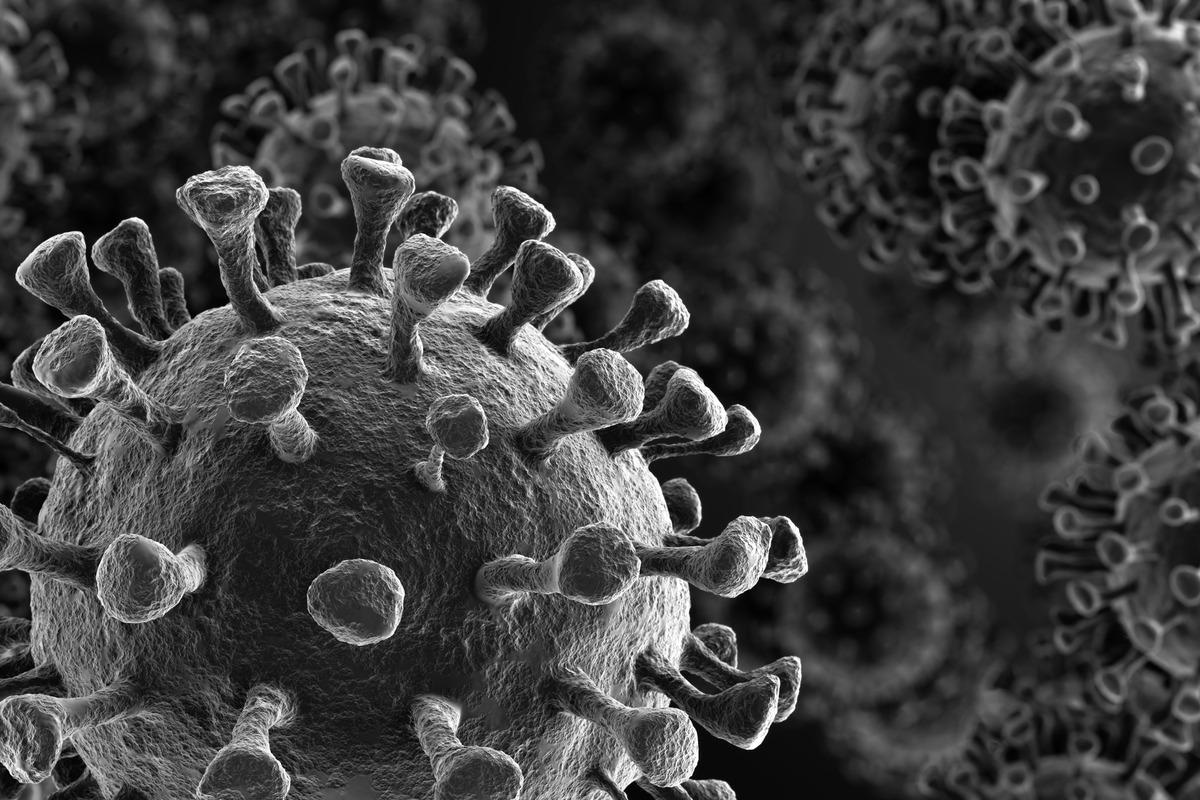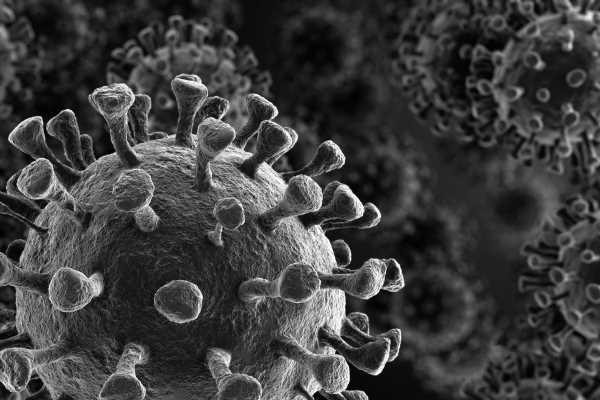Despite implementing various control measures, there still appears to be no clear end of the current coronavirus disease 2019 (COVID-19) pandemic. The emergence of new variants, especially the variants of concern (VOC), continues to drive the pandemic and introduces new challenges to controlling the virus. Due to these factors, developing new viral control and reduction methods is vital.

Background
The use of ultraviolet (UV) radiation as a disinfectant is an effective tool. Still, it is not always appropriate for use in everyday life because UV radiation damages viruses and damages human cells.
Visible light as a disinfection agent against fungi and bacteria has been the focus of many studies in recent years, with blue and violet light being the most successful at inactivating pathogenic fungi and bacteria. Visible light is absorbed in fungi and bacteria by endogenous photosensitizers, such as flavins or porphyrins, which subsequently induce the production of reactive oxygen species.
Cells are damaged by reactive oxygen species damaging proteins, DNA, or membranes, resulting in cell death. However, it is believed that viruses do not possess photosensitizers, although recent studies have shown that visible light has successfully reduced levels of coronavirus.
Methodology
The current literature study published in Photonics, conducted by a trio of Ulm University researchers, focused on visible light inactivation investigations of viruses. Excluding research on viruses in solutions with a similar riboflavin concentration to that used in standard culture media such as DMEM, which contains 0.4 mg riboflavin per milliliter, photodynamic virus inactivation was ruled out. This exception was made to assess any influence of this known photosensitizer better.
The following phrases were searched in various combinations on Pubmed and Google Scholar: virus, phage, bacteriophage, inactivation, photoinactivation, disinfection, visible light, radiation, irradiation, blue, violet, 405nm, and riboflavin.
When applicable, average log-reduction dosages were used to measure viral susceptibility (irradiation dose for a 90 percent reduction). The authors found suitable parameters by evaluating figures when the appropriate values were not specified in the text. If data sets were provided, the average log-reduction dosage was estimated using a reduction of around 3 log-level.
In most investigations, the riboflavin concentration was estimated to determine the possible influence of riboflavin. The concentration was believed to be 0.0 mg/L for distilled water and salt solutions such as phosphate-buffered saline (PBS). Typical concentrations for (fresh) medium were considered, such as 0.4 mg/L for DMEM, 0.2 mg/L for RPMI 1640, and 0.1 mg/L for MEM. These media are frequently combined with fetal calf serum (FCS) in percentages ranging from 2 to 10% or other ingredients. Still, as long as the media is the main component, the additional ingredients are ignored.
Only quantitative data in liquids with riboflavin contents <1mg/L were used to calculate median log-reduction dosages and other analyses. Experiments involving viruses on surfaces or within living cells were thought to be dissimilar to results in saline solutions or media thus, they were left out of the analysis.
Results
The authors selected 30 studies that were deemed appropriate from the literature search. If possible, average log-reduction dosages and the irradiation wavelengths are provided. A proportion of the studies were conducted over 50 years ago and used various types of white bulbs with undetermined emission spectrum or spectrally resolved irradiance. There was no way to quantify the (violet/blue) light sensitivity using a log-reduction dose in such circumstances.
The results collected from all the studies suggest that even with large variations between experimental conditions and virus species, visible blue or violet light can sufficiently inactivate viruses. Increased sensitivity was observed with enveloped viruses (such as coronaviruses) compared to non-enveloped viruses.
Photoinactivation is considered an inherent feature of the coronaviruses studied in many recently conducted studies. However, the media utilized in these experiments contained at least one photosensitizer, which may have contributed to the inactivation of the viruses. Riboflavin is a known photosensitizer shown to increase virus reduction, which is present in many common culture media.
The cause of viral photosensitivity, as well as the underlying modes of action, are yet unknown. If exogenous photosensitizers in the medium, such as riboflavin, are accountable for virus inactivation, it is a type of photodynamic treatment (PDT) in which reactive oxygen species destroy the virus nucleotides, proteins, or the virus envelope.
However, in procedures where the media is expected to contain no photosensitizers, such as saline-based solutions, photoinactivation of viruses has been observed. This effect is still considered oxygen-dependent, which could point to a mechanism involving endogenous photosensitizers and reactive oxygen species production. Although, there is no evidence to suggest that viruses contain photosensitizers and no plausible reasons why they may need photosensitizers.
Implications
Riboflavin, as well as potentially other culture media, seem to have a significant influence on photoinactivation results. In such research, DMEM, in particular, could lead to increased viral sensitivity and should be utilized cautiously.
While it is impossible to rule out the possibility that the medium affects coronavirus photoinactivation, studies should note that virus inactivation with visible light may differ significantly under other environments, such as in the open air. This is especially crucial in the current COVID-19 pandemic.
-
Hessling, M., Lau, B. and Vatter, P. (2022) "Review of Virus Inactivation by Visible Light", Photonics, 9(2), p. 113. doi: 10.3390/photonics9020113. https://www.mdpi.com/2304-6732/9/2/113
Posted in: Medical Science News | Medical Research News | Disease/Infection News
Tags: Bacteria, Bacteriophage, Cell, Cell Death, Coronavirus, Coronavirus Disease COVID-19, covid-19, Disinfectant, Disinfection, DNA, fungi, Living Cells, Nucleotides, Oxygen, Pandemic, Photonics, Research, Virus
.jpg)
Written by
Colin Lightfoot
Colin graduated from the University of Chester with a B.Sc. in Biomedical Science in 2020. Since completing his undergraduate degree, he worked for NHS England as an Associate Practitioner, responsible for testing inpatients for COVID-19 on admission.
Source: Read Full Article
